Description and cultivation of incarvillea
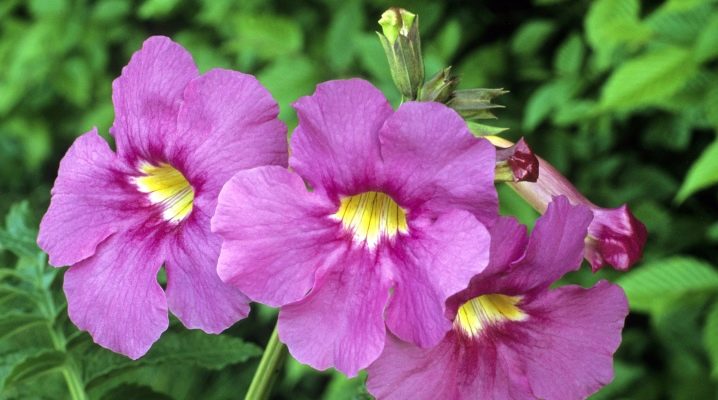
Incarvillea is an ornamental crop that is very popular among gardeners. Before growing a plant, you need to know about its specific features and care recommendations.
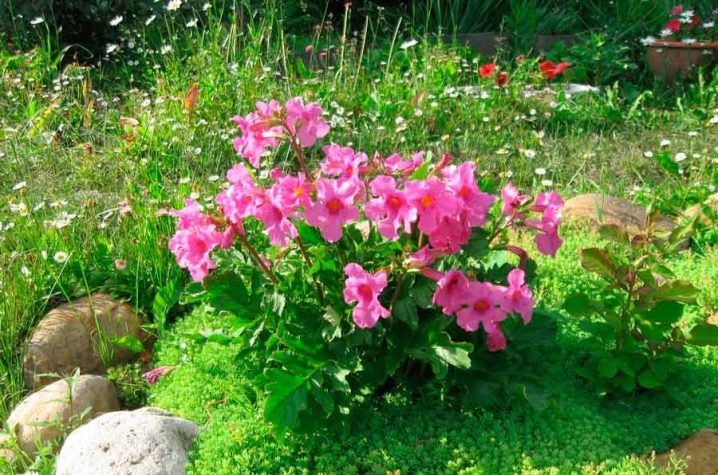
Description of the plant
The incarvillea flower is distinguished by a tuberous or woody root system. Most of the popular varieties have erect stems of a branchy or simple type. The foliage is usually dissected, unpaired, or toothed with a fine-toothed edge. The flowers of the popular culture are separate, have a bell-shaped calyx and a tubular corolla. Inflorescences are characterized by racemose and panicle shape. The color of the flowers is usually pinkish, red or yellow.
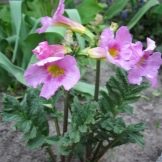
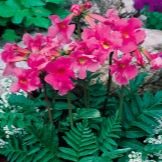

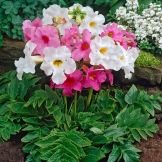
Types and varieties
Several main varietal varieties of the plant are usually cultivated by gardeners. The species described below are great for both home gardening and propagation in order to increase the aesthetic characteristics of landscape design.
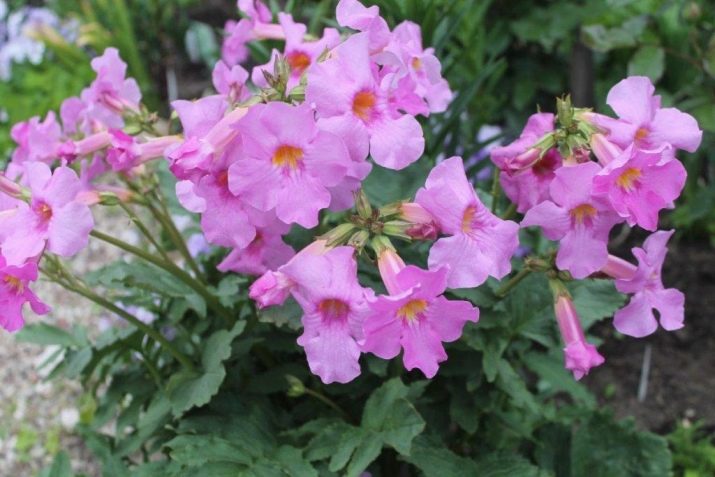

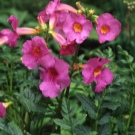

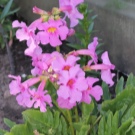

"Delaway Snowtop"
The varietal variety Incarvillea Delavayi is a perennial plant, the height of which reaches 50-60 cm, depending on the growing region and conditions of care. The foliage of the variety is distinguished by a slightly elongated shape and up to 20-25 cm long. The leaves are also characterized by pointed tips, which outwardly resemble the structure of a fern. Tubular flower stalks often bloom in early or mid-summer. The variety is distinguished by rather large inflorescences, the diameter of which varies from 6 to 8 cm. A characteristic feature of the variety is the pinkish-white shade of the buds. The average flowering time is 1.5-2 months. After that, the process of maturation of the seed material begins.
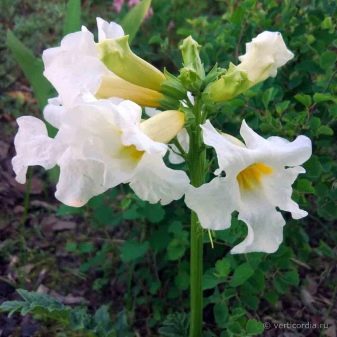

It is widely used for landscape design. Due to the visual characteristics, this variety is usually decorated with areas near the sidewalk, flower beds and various color compositions.
Chinese
The Chinese variety includes a fairly significant number of different varietal groups that are actively used in landscape design and household cultivation in the garden. The height of most of the known varieties varies from 0.3 to 0.5 m. A distinctive characteristic of the variety is the feathery shape of the leaf plates and the creamy yellow color of the petals. Flowers usually bloom 10-12 weeks after sowing the seed.
Since small stems often grow on the main bush, the flowering of the varietal group has a short duration. A subtype of culture is also highly popular, called the "White Swan". The flowering of the variety begins 2.5-3 months after sowing. A distinctive feature is the rapid change of flowering.
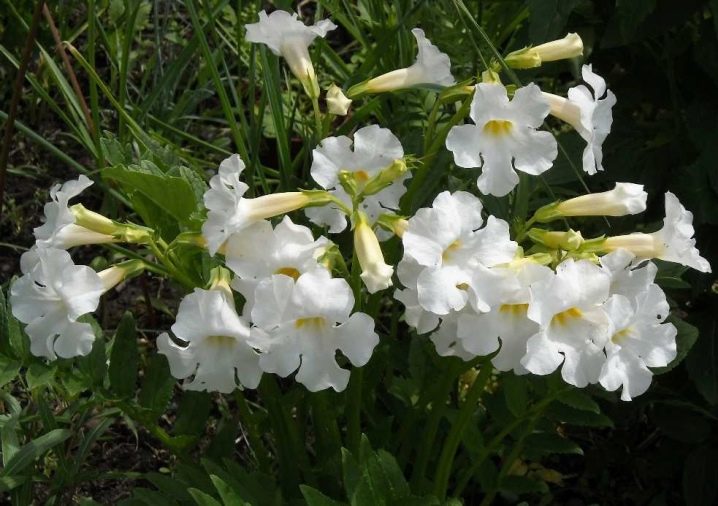
Potanin
This variety belongs to herbaceous plants, the height of which is from 1.3 to 1.5 m... External rosettes usually consist of several split-pinnate sheet plates with an average length of 60-70 mm. Loose racemose inflorescences usually produce 3 to 5 flowers. The flowering period of the variety is 5 to 6 weeks. A distinctive feature is lack of high frost resistance, because of which, wintering must be carried out exclusively with a cover. The leaf plates are characterized by a purple hue.
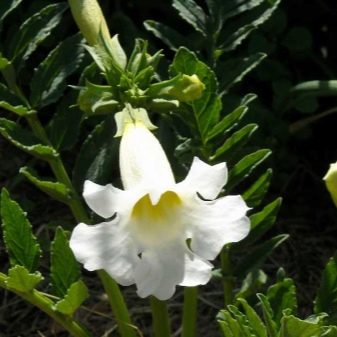
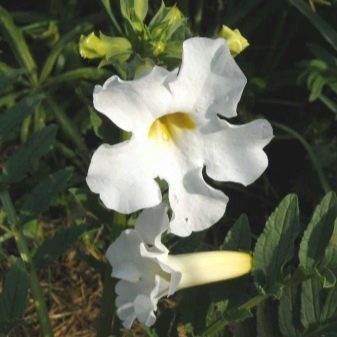
"Olga"
The stem system is distinguished by its oblong shape and the presence of numerous branches on top. As the root system grows and develops, the stems harden, which is especially pronounced at the base. The leaf plates are located opposite and differ in an elongated, somewhat pointed oval shape. The shade of the foliage is usually green, in some cases it can be more saturated, giving in a dark, almost black color. The flowers are small in size and in colors such as pinkish and red. The diameter of the inflorescences varies from 30 to 35 cm, depending on the growing conditions and the quality of crop care. It begins to bloom in early July, flowering continues until August.
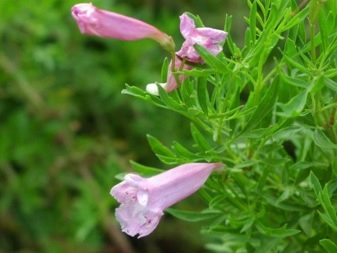

Unlike similar varietal species, this type cannot boast of good winter hardiness. At the onset of the first frost, experts recommend additionally insulating and covering with Incarvillea.
Delavea dense
The height of the stem system of dense delavea varies from 35 to 40 cm... In addition to its distinctive shine and smooth structure, the stem system is characterized by a small fluff. A characteristic feature is the shape of the leaves, which visually resembles a heart. Small flowers are usually located in the center of the bush, their diameter is 6-7 cm.This variety begins to bloom in early summer with a total duration of 25-30 days. The plant is considered to be quite frost-resistant and able to withstand sudden changes in temperature. The most popular subspecies of the variety is the large-flowered type. The height of the culture varies from 90 to 100 cm. A distinctive feature is a wide variety of shades - the flowers can be snow-white, pinkish or pale orange.

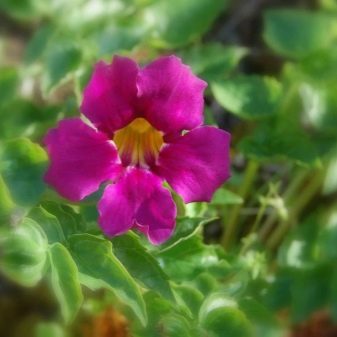
"Mayra"
In the wild, the perennial variety grows in the northwestern region of China. The foliage of this variety grows from the bottom, not from the main stem. The shape of the leaves is usually round or elongated with no corners at all. The leaf plates can be up to 40 cm long. Flowering is characterized by red and purple hues. The size of the inflorescences varies from 25 to 30 cm, depending on the region of growth. The variety is considered frost-resistant, because it is actively grown in cold areas.
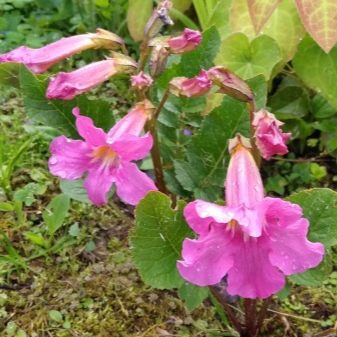
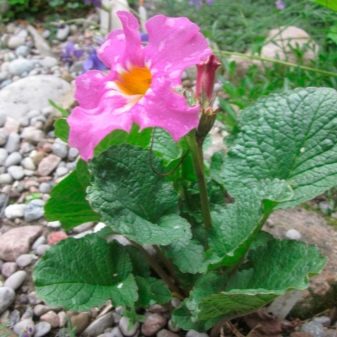
Other
Today there are a large number of different varieties and varieties of this plant. Breeders are actively involved in breeding new species that are great for any conditions or application. In addition to the varieties described above, the plant includes about 50 new types that have not found wide recognition in the post-Soviet space. Among them, it is worth noting such varieties as raspberry, salmon and lemon incarvillea.
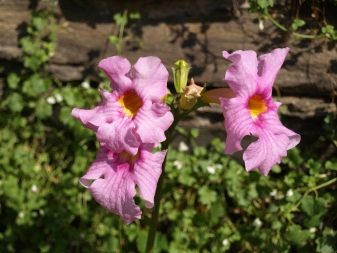
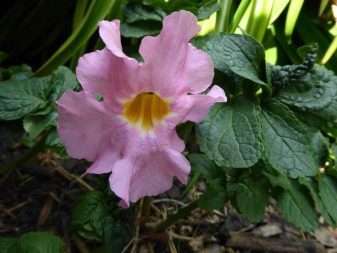
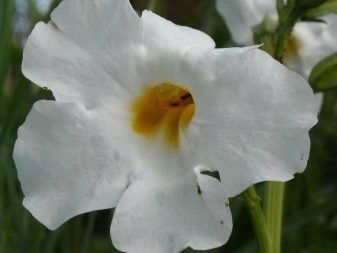
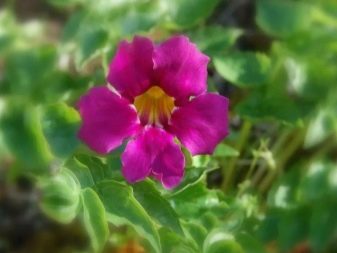
Growing conditions
Incarvillea is considered a vibrant plant with unique decorative qualities. To use this culture in the country, you must adhere to certain care recommendations. Features of agricultural technology allow you to understand how to properly grow a flower in the open field, what to do after flowering, as well as how to deal with pests and diseases.
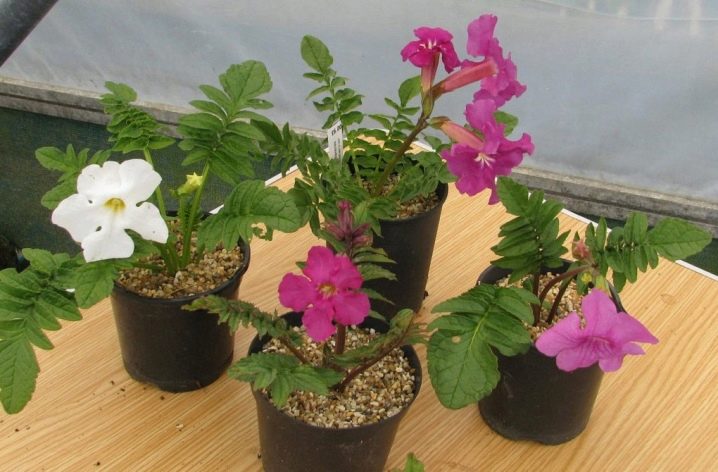
Location
To grow a popular decorative culture, you need to find a place that which will be located on a small hill. This feature is explained by the fact that the plant practically does not tolerate prolonged stagnation of liquid.
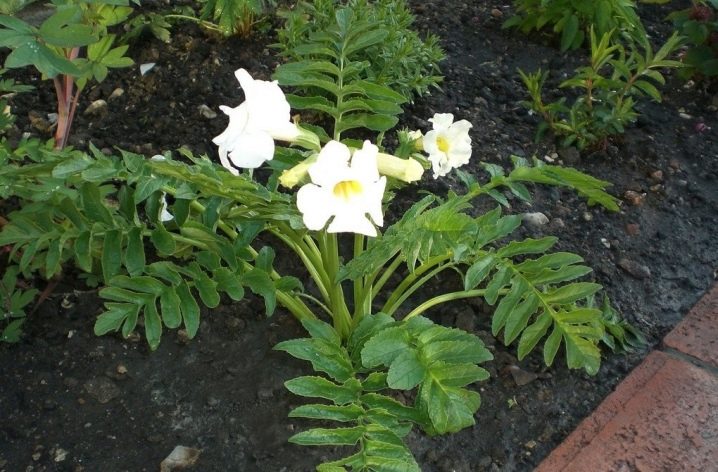
It is worth paying attention to the fact that the area for growing a flower should be well lit by the sun and be ventilated. Some varietal varieties need additional shade in the afternoon.
The soil
If an ornamental plant is planted in a fairly dense soil mixture, experts it is recommended to add a small amount of drainage agent, which can be crushed stone, sand or crumbled brick. It is also important that the existing soil has a low acidity level and a large amount of various trace elements.Near the planted flower, it is necessary to tamp and water the soil.
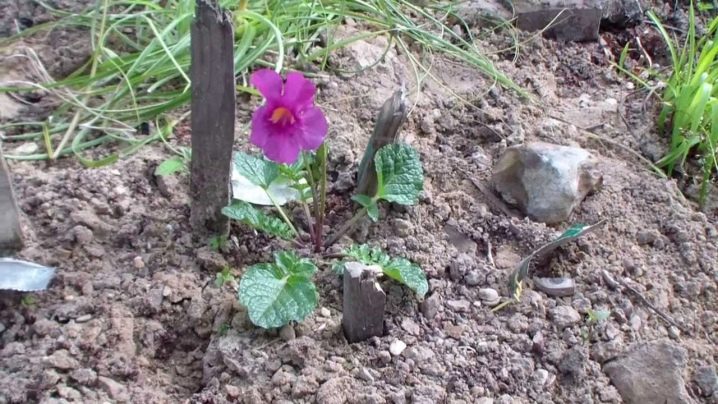
Landing
The first thing to do for planting is to carefully remove the prepared seedlings from the containers. If this is done carelessly, there is a high risk of damage to the plant's root system. When planting tubers in the potting mix, it is important to ensure that the root collar is slightly buried in the soil. Otherwise, the flower will not be able to develop properly, and the main stem will often hurt and be attacked by pests.
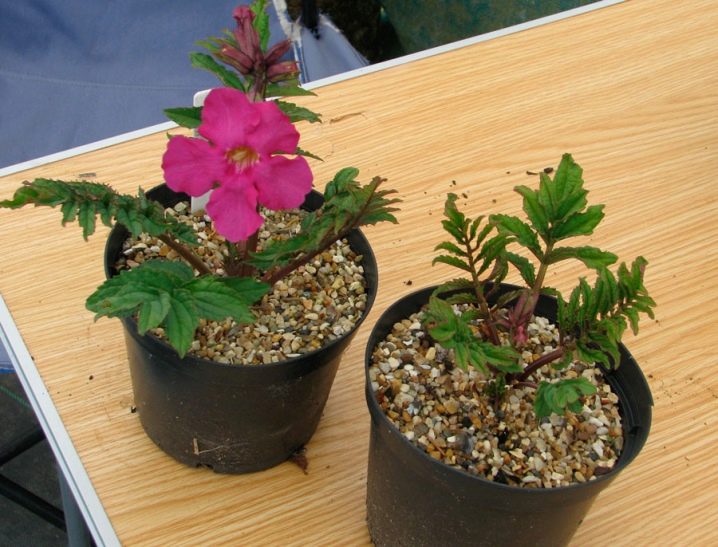
Watering
Most existing plant varieties require moderate watering. The gardener should not be allowed to stagnate the liquid for a long time or dry out the soil mixture. After the flower has been saturated with moisture, it is necessary to loosen the soil near it and remove any weeds. Loosening itself should be done carefully to avoid damage to the root system.

Fertilization
In the process of active growth, decorative culture is necessary additionally fertilize using complex preparations made on a mineral basis... The use of organic products has a negative effect on the vegetative processes of the plant. In addition to the main stage of development, the plant should be fed during the formation of flower buds. To do this, a small amount of mullein or bird droppings must be introduced into the root system.
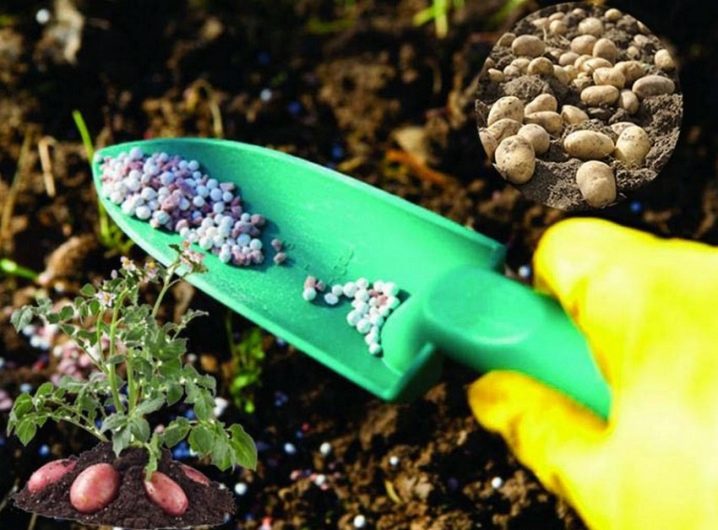
Preparing for winter
Preparing for winter is a particularly important process in order to create optimal conditions for effective growth of Incarvillea. This practice is usually used for those varieties that are not winter hardy. Most of the known types hibernate rather poorly. For shelter, a small amount of peat, sawdust or compost substance is usually used, which is poured onto the area with a layer of 55 to 60 mm. In early spring, the shelter should be removed. Otherwise, the tubers will prey.
Young or small bushes are usually covered with a plastic or glass bottle. When growing a plant in frosty and snowy regions, the culture should first be removed from the soil, rinsed with a specialized solution, dried and stored in a dry place until spring comes.
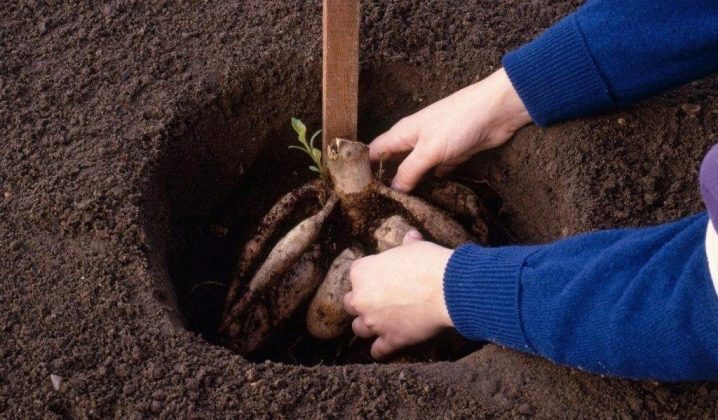
Reproduction
Plant propagation is no different from growing other popular crops. To reduce the likelihood of various problems or avoid mistakes, it is necessary to adhere to the recommendations of specialists.
Incarvillea can be propagated using the following methods.
- From seeds. Seed material should be buried in the soil mixture by 10-15 mm, depending on humidity and external environmental conditions. Further, the crops are watered abundantly for 5-6 days and removed to a warm and dry place. The first shoots usually appear in 1 week. Experts recommend planting seeds in peat pots.
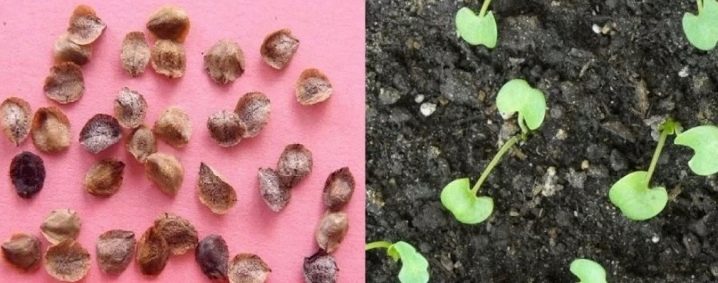
- Leafy cuttings. To propagate the plant in this way, it is necessary to remove the most mature leaf plate from the outlet and cut off a small piece of the stem. Such actions are always carried out in the summer. The size of the stem should be between 25 and 45 mm. Next, you should treat the cut area with a specialized solution to stimulate growth. Cuttings are planted in open ground. It is recommended to add sand and peat to the soil beforehand. First, the cuttings have roots, after which foliage begins to form. Flowering usually begins after 1 season.
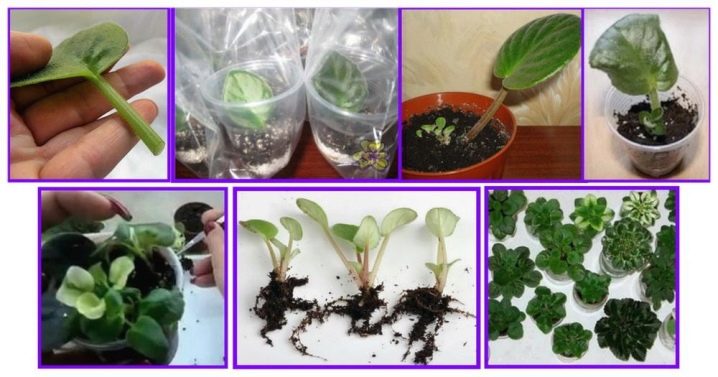
- By dividing the bush. Cultivation of a crop using this method is carried out in September or March. After the plant is removed from the soil mixture, it must be carefully cut into several parts. The cut areas are then treated with crushed coal tincture. The parts are planted in open holes.
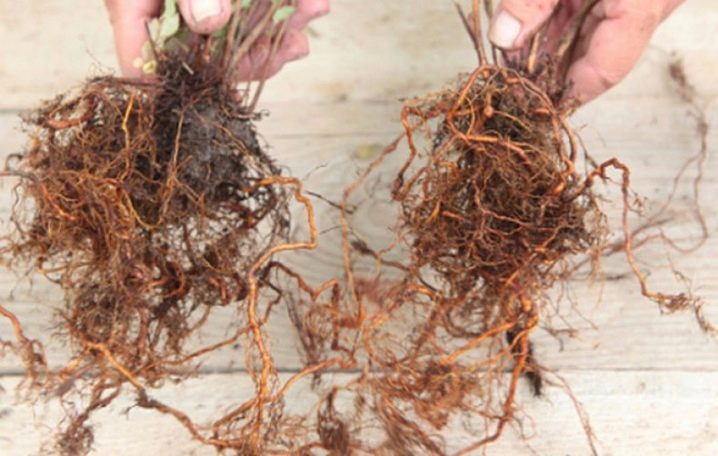
The most effective is the seed reproduction method.This method is characterized by fast germination of the root system, better development of foliage and main stem.
Diseases and pests
The most common plant disease is root decay. In a too humid environment, there is an active reproduction of various pathogens and rot, which can severely damage the tubers to such an extent that they cannot be restored. In the presence of the first symptoms of the disease, it is necessary to quickly treat the Incarvillea with fungicidal solutions or complex preparations.
Experts recommend using such professional and highly specialized tools as "Fundazol" and "Skor"... And also differs in high efficiency "Topaz" or any other drug with a similar effect.

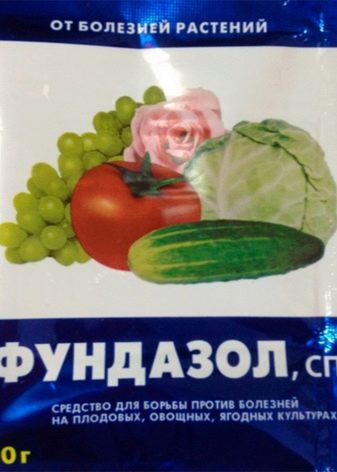
In addition to caring for the plant and applying the necessary funds, it is also necessary to revise the irrigation schedule and correctly calculate the water consumption. Otherwise, the disease will reappear.
As for pests, the plant is most often negatively affected by mealybugs and spider mites. These organisms mainly receive micronutrients from the main stem, which leads to deformation and wilting of flowers or foliage. For pest control, drugs with acaricidal action are usually used: "Aktara", "Actellik" and many others.
For information on how to properly grow Incarvillea, see the next video.







































































































The comment was sent successfully.